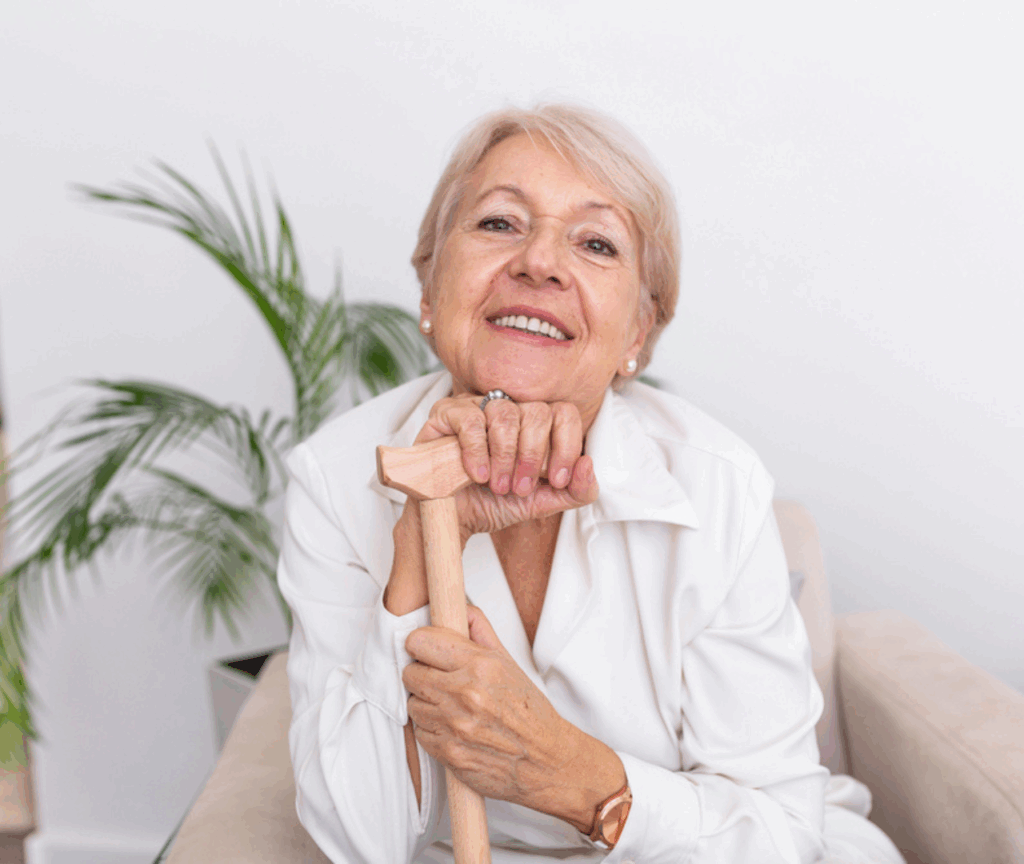To reduce fall risk for older adults at home, consider these top strategies:
- Remove tripping hazards such as loose rugs, cords, and clutter.
- Install grab bars in bathrooms and along stairways.
- Improve lighting in hallways, staircases, and rooms—especially night lighting.
- Encourage regular exercise that improves balance, strength, and flexibility.
- Review medications with a doctor or pharmacist to identify side effects that could cause dizziness or drowsiness.
- Use non-slip mats in the shower and tub.
- Ensure proper footwear—supportive, non-slip shoes are a must.
- Schedule regular vision and hearing checkups, as poor sight or balance issues increase fall risk.
- Adjust furniture layout to allow for easy movement without tight corners or sharp edges.
- Install handrails on both sides of stairs and use contrasting tape on stair edges for better visibility.
Why Fall Prevention Matters
Falls are the leading cause of injury in older adults. According to the Centers for Disease Control and Prevention (CDC), one in four adults over age 65 falls each year. These falls often lead to serious consequences, such as hip fractures, head injuries, and long-term loss of independence.
That’s why Falls Prevention Awareness Day, observed every September, is a crucial time for caregivers, family members, and seniors themselves to revisit home safety strategies.
Home Modifications That Make a Difference
Simple home modifications can dramatically lower fall risk. Here are specific areas to assess:
1. Bathroom Safety
- Install grab bars near toilets and in tubs/showers.
- Use a raised toilet seat to reduce the effort of sitting and standing.
- Place non-slip decals or mats on the shower floor.
- Consider a shower chair for extra stability.
2. Bedroom Safety
- Keep a lamp, flashlight, and phone within easy reach of the bed.
- Use a nightlight to illuminate the path to the bathroom.
- Avoid low beds or overly soft mattresses that make it harder to get up.
3. Kitchen Adjustments
- Store frequently used items within arm’s reach to avoid step stools.
- Use non-slip floor mats with tapered edges.
- Keep floors dry and immediately clean up spills.
4. Living Areas
- Clear pathways of cords, loose rugs, or magazine piles.
- Reposition furniture to create wider walking paths.
- Consider removing glass coffee tables or sharp-edged furniture.
Health-Related Fall Risk Factors
Environmental changes aren’t the only solution. Health and lifestyle habits play a big role in fall prevention. Here’s what else to consider:
Exercise and Mobility
Regular physical activity helps maintain strength, flexibility, and balance. Gentle programs like tai chi, water aerobics, or chair yoga are ideal. Encourage seniors to work with a physical therapist if they have specific mobility concerns.
Medication Management
Some prescriptions can cause dizziness, sleepiness, or low blood pressure—all of which increase fall risk. Have a provider or pharmacist review all medications, especially if the person is taking more than four drugs.
Vision and Hearing
Difficulty seeing or hearing can make it hard to detect hazards like steps, pets, or someone approaching quickly. Annual vision and hearing checks can help detect issues early and ensure the use of necessary aids like glasses or hearing devices.
Nutrition and Hydration
Malnutrition and dehydration contribute to weakness and dizziness. Make sure seniors are eating balanced meals, drinking plenty of fluids, and—if necessary—taking supplements like vitamin D to support bone health.
Technology to the Rescue
Today’s fall prevention toolkit also includes smart home technology:
- Motion sensor lighting for automatic illumination at night
- Medical alert systems with fall detection features
- Smart floor mats that detect movement and alert caregivers
- Video doorbells and cameras to reduce the need to rush to the door
These tools not only enhance safety but also provide peace of mind to family caregivers.
Celebrating Falls Prevention Awareness Day
Falls Prevention Awareness Day is not just about education—it’s a call to action. Here are ways to mark the occasion:
- Host a home safety walk-through with family or a caregiver.
- Attend a local falls prevention workshop or community wellness fair.
- Schedule a doctor visit to review medications and mobility.
- Start a balance and strength exercise plan.
- Have an open conversation about fall concerns and past near-misses.
The goal is to empower seniors and families with practical knowledge and tools—not to cause fear, but to promote independence and safety.
Conclusion
Preventing falls at home for aging adults starts with small but powerful changes. By addressing both environmental and health-related risk factors, families can create a safer space and help loved ones maintain confidence, mobility, and dignity.
As we observe Falls Prevention Awareness Day, use this moment to evaluate your home environment, daily routines, and support systems. A little attention now can prevent life-altering injuries later—and that’s something worth prioritizing all year long.

